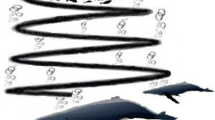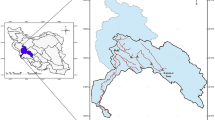Abstract
The proposed algorithm is based on the combination of enhanced seagull optimization (ESO) algorithm, differential evolution (DE) algorithm, wild horse optimization (WHO) algorithm with probability matrix to solve optimization problems. The seagull optimized algorithm is enhanced to avoid premature convergence. A probabilistic matrix with an equal value of each location is generated having 3 columns and the number of populations as rows. The three columns represent enhanced seagull optimization algorithm, differential evolution algorithm, and wild horse optimization algorithm respectively. Initial decision vector is generated in the bound. The probabilistic matrix after each iteration is updated with respect to minimum fitness value among 3 algorithms for each population. The decision vector for the next stage is decided based on the highest value of probability matrix. This stage improves the learning process and reduces the convergence rate. The updation of the probabilistic matrix and selection of decision vector for the next stage is continued until certain criteria are achieved. The optimized result of the proposed algorithm is the final minimum value. The proposed methodology is validated by comparing mean, standard deviation, best and worst value with ten other algorithms for 95 functions of CEC-2021. These algorithms are Archimedes optimization, wild horse optimizer, cuckoo search, differential evolution, black widow optimization, seagull optimization, whale optimization, arithmetic optimization, coot optimization, enterprise development (ED), hybrid jellyfish search and particle swarm optimization (HJPSO), modified lightning search algorithm (MLSA), polar lights optimizer (PLO), and parrot optimizer algorithm. The efficiency of the proposed methodology was also validated statistically with the ten methodologies The proposed methodology is also verified by five real-time engineering optimization problems. The results show better performance of the proposed algorithm compared to other algorithms.


Similar content being viewed by others
References
Abdel-Baset M, Hezam I (2016) A hybrid flower pollination algorithm for engineering optimization problems. Int J Comput Appl. https://doi.org/10.5120/ijca2016909119
Abdel-Basset M, Mohamed R, Elhoseny M et al (2020) A hybrid COVID-19 detection model using an improved marine predators algorithm and a ranking-based diversity reduction strategy. IEEE Access. https://doi.org/10.1109/ACCESS.2020.2990893
Abualigah L, Diabat A, Mirjalili S et al (2021) The arithmetic optimization algorithm. Comput Methods Appl Mech Eng 376:113690. https://doi.org/10.1016/j.cma.2020.113609
Ahmadianfar I, Bozorg-Haddad O, Chu X (2020) Gradient-based optimizer: a new metaheuristic optimization algorithm. Inf Sci (Ny). https://doi.org/10.1016/j.ins.2020.06.037
Anita YA, Kumar N (2020) Artificial electric field algorithm for engineering optimization problems. Expert Syst Appl. https://doi.org/10.1016/j.eswa.2020.113308
Arora S, Singh S (2019) Butterfly optimization algorithm: a novel approach for global optimization. Soft Comput. https://doi.org/10.1007/s00500-018-3102-4
Ates A, Akpamukcu M (2021) Optimization to optimization (OtoO): optimize monarchy butterfly method with stochastics multi-parameter divergence method for benchmark functions and load frequency control. Eng Comput. https://doi.org/10.1007/s00366-021-01364-0
Baykasoğlu A, Ozsoydan FB, Senol ME (2020) Weighted superposition attraction algorithm for binary optimization problems. Oper Res. https://doi.org/10.1007/s12351-018-0427-9
Che Y, He D (2021) A hybrid whale optimization with seagull algorithm for global optimization problems. Math Probl Eng. https://doi.org/10.1155/2021/6639671
Dhiman G, Kumar V (2019) Seagull optimization algorithm: theory and its applications for large-scale industrial engineering problems. Knowledge-Based Syst. https://doi.org/10.1016/j.knosys.2018.11.024
Duan L, Zhou H, Tan S et al (2021) Improved particle swarm optimization algorithm for enhanced coupling of coaxial optical communication laser. Opt Fiber Technol 64:102559. https://doi.org/10.1016/j.yofte.2021.102559
Elaziz MA, Ewees AA, Yousri D et al (2020) An improved marine predators algorithm with fuzzy entropy for multi-level thresholding: real world example of COVID-19 CT image segmentation. IEEE Access. https://doi.org/10.1109/ACCESS.2020.3007928
Faramarzi A, Heidarinejad M, Mirjalili S, Gandomi AH (2020) Marine predators algorithm: a nature-inspired metaheuristic. Expert Syst Appl 152:113377. https://doi.org/10.1016/j.eswa.2020.113377
Gandomi AH, Yang XS, Alavi AH (2013) Cuckoo search algorithm: a metaheuristic approach to solve structural optimization problems. Eng Comput. https://doi.org/10.1007/s00366-011-0241-y
Ghasemi MR, Varaee H (2019) Damping vibration-based IGMM optimization algorithm: fast and significant. Soft Comput. https://doi.org/10.1007/s00500-017-2804-3
Halim AH, Ismail I, Das S (2021) Performance assessment of the metaheuristic optimization algorithms: an exhaustive review. Artif Intell Rev. https://doi.org/10.1007/s10462-020-09906-6
Hashim FA, Hussain K, Houssein EH et al (2021) Archimedes optimization algorithm: a new metaheuristic algorithm for solving optimization problems. Appl Intell. https://doi.org/10.1007/s10489-020-01893-z
Hayyolalam V, Pourhaji Kazem AA (2020) Black widow optimization algorithm: a novel meta-heuristic approach for solving engineering optimization problems. Eng Appl Artif Intell. https://doi.org/10.1016/j.engappai.2019.103249
Heidari AA, Mirjalili S, Faris H et al (2019) Harris hawks optimization: algorithm and applications. Futur Gener Comput Syst 97:849–872. https://doi.org/10.1016/j.future.2019.02.028
Hsu YL, Liu TC (2007) Developing a fuzzy proportional-derivative controller optimization engine for engineering design optimization problems. Eng Optim. https://doi.org/10.1080/03052150701252664
Hu G, Zhu X, Wei G, Ter CC (2021) An improved marine predators algorithm for shape optimization of developable ball surfaces. Eng Appl Artif Intell 105:104417. https://doi.org/10.1016/j.engappai.2021.104417
Kaur S, Awasthi LK, Sangal AL, Dhiman G (2020) Tunicate swarm algorithm: a new bio-inspired based metaheuristic paradigm for global optimization. Eng Appl Artif Intell 90:103541. https://doi.org/10.1016/j.engappai.2020.103541
Kaveh A, Bakhshpoori T (2016) Water evaporation optimization: a novel physically inspired optimization algorithm. Comput Struct 167:69–85. https://doi.org/10.1016/j.compstruc.2016.01.008
Kaveh A, Dadras A (2017) A novel meta-heuristic optimization algorithm: thermal exchange optimization. Adv Eng Softw 110:69–84. https://doi.org/10.1016/j.advengsoft.2017.03.014
Lian J et al (2024) Parrot optimizer: Algorithm and applications to medical problems. Comput Biol Med 172:108064
Li S, Chen H, Wang M et al (2020) Slime mould algorithm: a new method for stochastic optimization. Futur Gener Comput Syst. https://doi.org/10.1016/j.future.2020.03.055
Li SH, Luo XH, Wu LZ (2021a) An improved whale optimization algorithm for locating critical slip surface of slopes. Adv Eng Softw 157–158:103009. https://doi.org/10.1016/j.advengsoft.2021.103009
Li LL, Liu ZF, Tseng ML et al (2021b) Improved tunicate swarm algorithm: Solving the dynamic economic emission dispatch problems. Appl Soft Comput 108:107504. https://doi.org/10.1016/j.asoc.2021.107504
Mirjalili S, Lewis A (2016) The whale optimization algorithm. Adv Eng Softw. https://doi.org/10.1016/j.advengsoft.2016.01.008
Mirjalili S, Mirjalili SM, Lewis A (2014) Grey wolf optimizer. Adv Eng Softw 69:46–61. https://doi.org/10.1016/j.advengsoft.2013.12.007
Mirjalili S, Mirjalili SM, Hatamlou A (2016) Multi-verse Optimizer: a nature-inspired algorithm for global optimization. Neural Comput Appl. https://doi.org/10.1007/s00521-015-1870-7
Mirjalili S, Gandomi AH, Mirjalili SZ et al (2017) Salp swarm algorithm: a bio-inspired optimizer for engineering design problems. Adv Eng Softw 114:163–191. https://doi.org/10.1016/j.advengsoft.2017.07.002
Nama S, Saha AK (2018) An ensemble symbiosis organisms search algorithm and its application to real world problems. Decis Sci Lett. https://doi.org/10.5267/j.dsl.2017.6.006
Naruei I, Keynia F (2021a) Wild horse optimizer: a new meta-heuristic algorithm for solving engineering optimization problems. Eng Comput. https://doi.org/10.1007/s00366-021-01438-z
Naruei I, Keynia F (2021b) A new optimization method based on COOT bird natural life model. Expert Syst Appl 183:115352. https://doi.org/10.1016/j.eswa.2021.115352
Nayyef HM, Ibrahim AA, Mohd Zainuri MAA, Zulkifley MA, Shareef H (2023) A novel hybrid algorithm based on jellyfish search and particle swarm optimization. Mathematics 11(14):3210
Panigrahy D, Sahu PK (2016) Extended Kalman smoother with differential evolution technique for denoising of ECG signal. Australas Phys Eng Sci Med 39:783–795. https://doi.org/10.1007/s13246-016-0468-4
Panigrahy D, Sahu PK (2017) Extraction of fetal ECG signal by an improved method using extended Kalman smoother framework from single channel abdominal ECG signal. Australas Phys Eng Sci Med 40:197–207. https://doi.org/10.1007/s13246-017-0527-5
Panigrahy D, Samal P (2021) Modified lightning search algorithm for optimization. Eng Appl Artif Intell 105:104419. https://doi.org/10.1016/j.engappai.2021.104419
Panigrahy D, Sahu PK, Albu F (2021) Detection of ventricular fibrillation rhythm by using boosted support vector machine with an optimal variable combination. Comput Electr Eng. https://doi.org/10.1016/j.compeleceng.2021.107035
Poli R, Kennedy J, Blackwell T (2007) Particle swarm optimization. Swarm Intell 1:33–57
Qin AK, Huang VL, Suganthan PN (2009) Differential evolution algorithm with strategy adaptation for global numerical optimization. IEEE Trans Evol Comput 13:398–417. https://doi.org/10.1109/TEVC.2008.927706
Qu C, He W, Peng X, Peng X (2020) Harris hawks optimization with information exchange. Appl Math Model. https://doi.org/10.1016/j.apm.2020.03.024
Rao SS (2019) Engineering optimization: theory and practice. Wiley
Rao RV, Savsani VJ, Vakharia DP (2011) Teaching-learning-based optimization: A novel method for constrained mechanical design optimization problems. CAD Comput Aided Des 43:303–315. https://doi.org/10.1016/j.cad.2010.12.015
Ravindran A, Ragsdell KM, Reklaitis GV (2007) Engineering optimization methods and applications second edition. Wiley
Samal P, Mohanty S, Ganguly S (2018) Modeling, optimal sizing, and allocation of DSTATCOM in unbalanced radial distribution systems using differential evolution algorithm. Int J Numer Model Electron Netw, Dev Fields. https://doi.org/10.1002/jnm.2351
Samal P, Ganguly S, Mohanty S (2019) A fuzzy pragmatic DE–CSA hybrid approach for unbalanced radial distribution system planning with distributed generation. Soft Comput. https://doi.org/10.1007/s00500-019-03772-3
Samareh Moosavi SH, Bardsiri VK (2019) Poor and rich optimization algorithm: a new human-based and multi populations algorithm. Eng Appl Artif Intell 86:165–181. https://doi.org/10.1016/j.engappai.2019.08.025
Savsani P, Savsani V (2016) Passing vehicle search (PVS): a novel metaheuristic algorithm. Appl Math Model. https://doi.org/10.1016/j.apm.2015.10.040
Suganthan PN, Hansen N, Liang JJ, et al (2020) Problem definitions and evaluation criteria for the CEC 2021 special session and competition on single objective bound constrained numerical optimization. Tech Report, Nanyang Technol Univ Singapore, May 2005 KanGAL Rep 2005005, IIT Kanpur, India
Truong TN, Chou JS, (2024) Metaheuristic algorithm inspired by enterprise development for global optimization and structural engineering problems with frequency constraints. Eng Struct 318:118679
Wang Z, Xuan J (2021) Intelligent fault recognition framework by using deep reinforcement learning with one dimension convolution and improved actor-critic algorithm. Adv Eng Informatics 49:101315. https://doi.org/10.1016/j.aei.2021.101315
Wolpert DH, Macready WG (1997) No free lunch theorems for optimization. IEEE Trans Evol Comput Doi 10(1109/4235):585893
Xie Q, Guo Z, Liu D et al (2021) Optimization of heliostat field distribution based on improved gray wolf optimization algorithm. Renew Energy 176:447–458. https://doi.org/10.1016/j.renene.2021.05.058
Yang Z, Fang L, Zhang X, Zuo H (2021) Controlling a scattered field output of light passing through turbid medium using an improved ant colony optimization algorithm. Opt Lasers Eng 144:106646. https://doi.org/10.1016/j.optlaseng.2021.106646
Yuan C, Zhao D, Heidari AA, Liu L, Chen Y, Chen H, (2024) Polar lights optimizer: Algorithm and applications in image segmentation and feature selection. Neurocomputing 607:128427
Zheng YJ (2015) Water wave optimization: a new nature-inspired metaheuristic. Comput Oper Res 55:1–11. https://doi.org/10.1016/j.cor.2014.10.008
Zhou H, Zhang G, Wang X et al (2021) Structural identification using improved butterfly optimization algorithm with adaptive sampling test and search space reduction method. Structures. https://doi.org/10.1016/j.istruc.2021.05.043
Funding
The authors certify they have no affiliations with or involvement in any organization or entity with any financial or non-financial interest in the subject matter or materials discussed in this manuscript.
Author information
Authors and Affiliations
Corresponding authors
Ethics declarations
Conflict of interest
The authors declare that they have no conflict of interest.
Ethical approval
This article does not contain any studies with human participants or animals performed by any of the authors.
Additional information
Publisher's Note
Springer Nature remains neutral with regard to jurisdictional claims in published maps and institutional affiliations.
Appendix
Appendix
See Table 11.
Here, in the above Fig. 1, 2, 3, 4, 5, 6, 7, 8, 9, 10, 11, 12, 13, 14, 15, 16 represents different approaches such as AROA, WHO, DE, CSA, SOA, WOA, BWOA, AOA, MSOA, COOT, E, HJSPSO, PO, PLO, MLSA, and PA.
Rights and permissions
Springer Nature or its licensor (e.g. a society or other partner) holds exclusive rights to this article under a publishing agreement with the author(s) or other rightsholder(s); author self-archiving of the accepted manuscript version of this article is solely governed by the terms of such publishing agreement and applicable law.
About this article
Cite this article
Panigrahy, D., Samal, P. A novel hybrid ESO-DE-WHO algorithm for solving real-engineering optimization problems. Int J Syst Assur Eng Manag 16, 254–309 (2025). https://doi.org/10.1007/s13198-024-02609-z
Received:
Revised:
Accepted:
Published:
Issue Date:
DOI: https://doi.org/10.1007/s13198-024-02609-z








